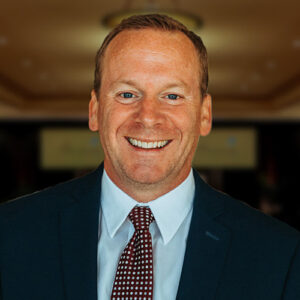Creating great partnerships isn’t a one-size-fits-all scenario.
By JD Stacey, Chief Growth Officer, Community Dental Partners
A truly great partnership requires both parties to be aligned in their vision and goals for the organization. This is no less true for DSOs. Bringing associate dentists into a DSO presents a unique opportunity for the associates to enter a partnership with the DSO, giving the associate the tools and resources they need to provide better care for their patients. But this isn’t a one-size-fits-all scenario. More often than not, it requires both parties to be flexible to each other’s needs.
I didn’t start my career in the dentistry field. I graduated from Brigham Young University with a degree in Behavioral Sciences and got my Master’s degree at the University of Georgia in Clinical/Medical Social Work. My dream was to be a therapist, and I did marriage and family therapy.
Along the way, I met Emmet Scott. We stayed in touch for years, and a lot of our discussions would be about the ins and outs of the psychology of owners and the daily challenges that entrepreneurs are facing. Scott and his friend Dr. Chad Evans brought me into their new venture, Community Dental Partners.
At Community Dental Partners, we partner with dentists, allowing them to preserve, grow, and enjoy their practice even more than they do today. Our model includes clinical and business guidance, technology, resources, and relationships that enable our clients to focus on their passion, while we take care of the areas of the business that don’t give them energy.
The early challenges of forging partnerships
One of my responsibilities from the very beginning was to help recruit dentists. I get asked all the time when we start talking to associates about partnerships. My answer every time is that it starts during the recruiting process. When I recruit dentists, I am already asking myself, “Is this someone I would eventually partner with?”
At Community Dental Partners, we want to create a partnership that feels engaging and exciting for everyone. We have a couple of different routes that our partners can go. Generally, they’re bringing money to the table for the partnership, but we try to make it a 50/50 split at the practice level.
Our very first partnership was with Dr. Craig Copeland, our Chief Dental Officer. He was one of the first associates we hired at Community Dental Partners, but I like to joke with him that he was a “false positive.” The partnership was amazing, and a lot of that is due to him and his personality. He is a very smart and humble guy, and he understands the big picture. Because it went so well, we went forward thinking, “Hey, we’re pretty good at this.”
However, our second partnership changed the way we think about partnerships. In all honesty, it did not go well. As a DSO, your primary responsibility is to support doctors. We took that same approach in the partnership, where we help to support around the pain points so that they wouldn’t have to deal with certain things if they didn’t want to. Ideally, that would allow them to go be the superstar dentists and lead their teams.
Unfortunately, that approach backfired on us. Anyone who has owned or run a business understands that it’s like a stock market. It can trend in one direction, but there’s a sort of roller coaster that you have to ride when you own a business. There are so many things outside of the control of the business owner, like regulatory bodies and staff not showing up to work. There are so many pain points. We thought we would try to insulate them from that, and it actually blew up on us.
That partnership taught us so much about what this process should look like. More importantly, it showed my failings as a leader. I did not properly prepare them for what business ownership is. Dentists are obviously smart people, but there isn’t a lot of business education that happens in dental school. You need a very different set of skills to make a practice successful. There is so much to learn about running a practice that isn’t taught in dental school.
As difficult as it was, I’m grateful for how poorly the second partnership went. That experience helped to build the foundation of what we call our MBA program for our associates to become owners.
What it takes to align the mindsets
I remember listening to Dr. Evans talk to a patient about a root canal. The patient was very nervous, and Dr. Evans was great at managing his fears and expectations. He instilled their confidence, saying that this was a procedure he’s done many times before. The root canal went very well, and it was largely because of all the work he did before even putting the drill in the patient’s mouth.
I took that same concept, positioning it as “what would I want our doctors to know before we help them find funding?” Funding is a huge pain point, and a massive barrier that we face. Before we start that process, I work to manage their expectations and help them to understand what makes a business owner successful.
I start by teaching the dentist about investing. I have never seen a better return on investment than when you know how to build out the proper culture, hire the right doctors, and engage the right support. So, it’s important for them to understand that investing requires that solid foundation of culture and support.
Next, I want them to understand what a dental practice is. I walk them through a pro forma up front, and I help them to understand what ramp up looks like. We do both de novos and acquisitions at Community Dental Partners, so I make sure that they understand both of those concepts. We also walk them through a practice lifecycle, the ups and downs of the business. At this stage, you’re helping them to understand what they might encounter and what sorts of situations might be out of their control.
Essentially, we help them to understand that when you’re a dentist, 80% of what you do is tactical. The other 20% is going to be managing some of your emotions. But for ownership, they need to understand that it’s flipped 80% emotional, 20% tactical. Which means that you need to learn to manage your emotions, and lead from that spot.
Finally, we walk them through the big picture. We don’t just look at the first few months; we also look at the first five years. We know how to start, and we might know what happens when you get to the five-year mark. But how do you get there? How do you manage your organization during year one, year two, or year three?
These concepts are essential to your success as a young associate of a dental practice, but they may not be the obvious things to know when you’re starting out. That’s why developing partnerships early on can be so instrumental to your success down the road.
JD Stacey
As Chief Growth Officer, JD Stacey is responsible for organizing and managing the company’s growth, from deciding where to establish CDP’s newest supported locations to bringing in new partners. He believes there’s no greater capital than investing in people, and some of his proudest moments center on the work he does to help CDP’s partners learn, grow, and achieve their goals in work and in life.






